Choosing the Best Country for Hair Transplant: Factors to Consider
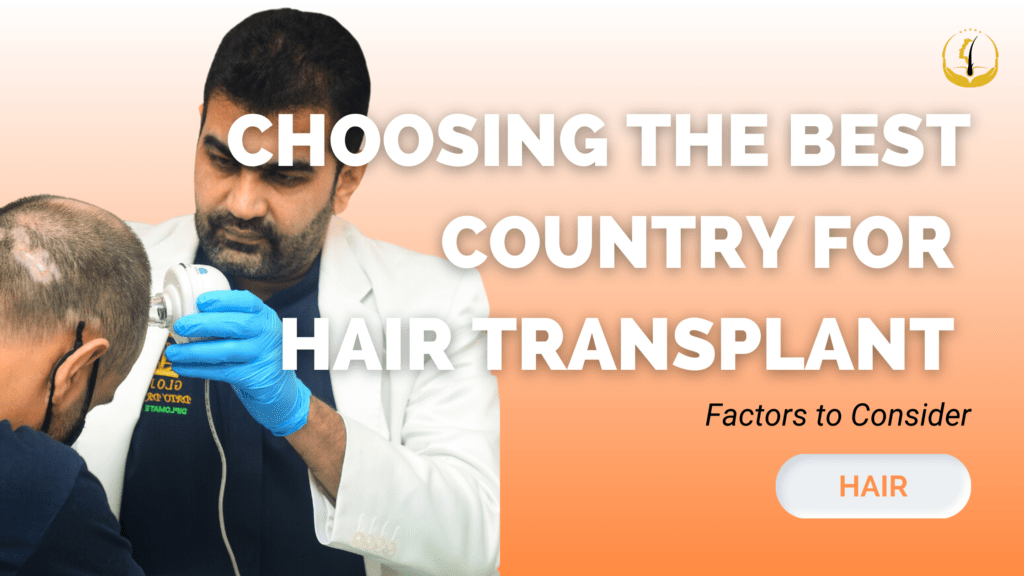
As we are witnessing a high development in the field of medical sciences and technologies, the concept of medical tourism has also developed rapidly. Malaysia has become one of the most favorite destinations for many people around the globe, especially from the Middle East. Malaysia has a great legacy and is known for its awesome culture, magnificence, peacefulness, extraordinary people and architecture. Individuals from everywhere throughout the world are pulled towards Malaysia because of its rich cultural legacy and different other reasons. Malaysia has now turned into the leading nation in providing world-class medical institutes at a considerably minimal cost. A person can discover financially affordable treatment for almost every branch of the medical field incorporating cardio surgery, body contouring surgery, urology, gastrointestinal surgery. You may compare the cost of the medical procedures from anywhere around the world, and you’ll find that in Malaysia, especially in KL cosmetic treatments are offered at amazingly reasonable prices. Everybody wishes to look attractive and beautiful from every angle. We all know that strong and healthy hair plays an important part in an individual’s identity. Balding has become quite a common condition these days that an individual of any age group can experience in his or her life. Extreme cases of hair loss can result in complete baldness. With the progressions in the medical field, hair transplant has now turned into the most ideal solution for this problem all over the world. In Hair Transplant, the hair follicles are extracted from the donor area and are embedded into the recipient area. There are significantly two procedures of hair transplant in Malaysia: FUE Transplant and FUT Transplant. You can contact GLOJAS hair transplant clinic to know more about these treatments. Many individuals are visiting Malaysia because of its cost-effective treatments. Hair transplant is not a 1 or 2 day treatment, so it is easy for anybody (people from outside Malaysia) to come here and take this opportunity to see the magnificence and heritage of Malaysia, while getting the treatment also. The specialist surgeons in Malaysia for hair transplant treatment are well equipped with the latest procedures and methods. You will receive the best treatment and hospitality at a very affordable price. These things are quite tempting and may influence you to visit Malaysia. Come to Malaysia and enjoy the wonderful climate, heritage, lovely places and exploit the affordable cosmetic treatments. Malaysia has become a hub of medical treatments and many people from different parts of the world are frequently coming here to get affordable treatments, especially cosmetic surgeries. Hair transplant at GLOJAS is one of the best treatments you can get to get rid of baldness permanently. Consult for FREE at GLOJAS Hair Specialist Clinic. We provide the best solution-oriented hair transplant with our specialist doctors experts in their fields, treating all of our patients with honest, trustworthy, ethical, and equal service of the highest quality, meeting all the required national and international standards.
Why Does Crown Hair Loss Happen?
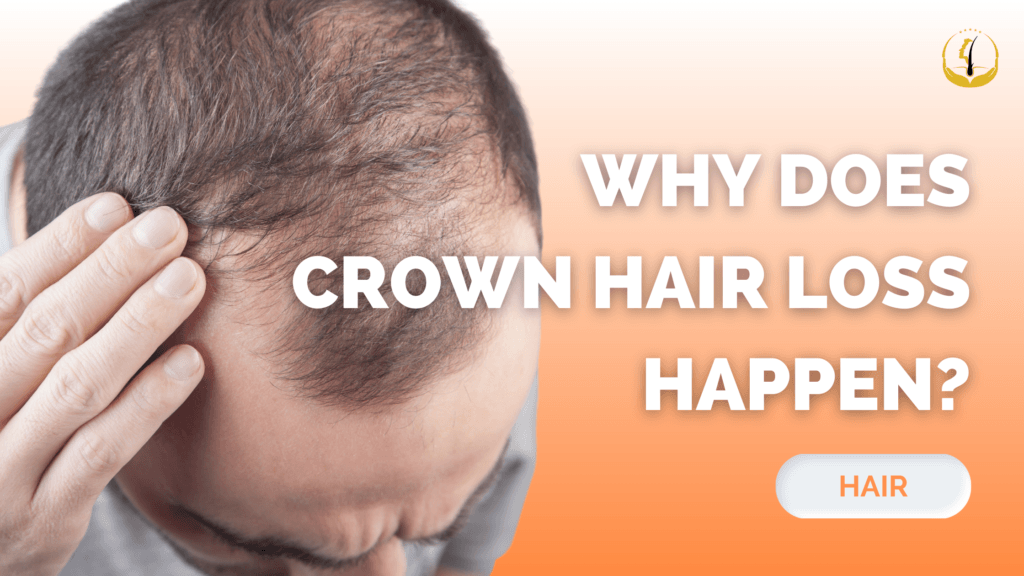
Crown hair loss, often referred to as vertex baldness or male-pattern baldness, is a common challenge that can impact confidence and self-esteem. This distinct form of hair loss targets the crown area of the scalp, leaving individuals searching for answers. Let’s delve into the complexities of crown hair loss, examining its roots, prevalence, and viable solutions to reclaim a robust and vibrant head of hair. Genetics Q: How does genetics play a role in crown hair loss? A: Genetic predisposition, especially through the inheritance of dihydrotestosterone (DHT) sensitivity, is a leading cause. If your family has a history of crown hair loss, you may be more susceptible. Hormonal Imbalances Q: Can hormonal imbalances contribute to crown hair loss in both men and women? A: Yes, conditions like PCOS and an overproduction of DHT can disrupt the hair growth cycle, weakening follicles and leading to crown hair loss. Age Q: How does aging affect crown hair loss? A: Aging naturally results in smaller hair follicles producing thinner hair, contributing to crown hair loss over time. Stress Q: Can stress exacerbate crown hair loss? A: Chronic stress can lead to telogen effluvium, causing hair to fall out. Managing stress is crucial for maintaining a healthy crown. Poor Nutrition Q: How does nutrition impact crown hair loss? A: Essential nutrients like biotin, iron, and zinc are vital for healthy hair. A well-balanced diet supports hair growth and prevents crown hair loss. Hairstyling Practices Q: Can hairstyling practices contribute to crown hair loss? A: Excessive heat styling, tight hairstyles, and harsh chemicals can damage follicles, emphasizing the need for gentle hair care. Solutions for Crown Hair Loss Medications: Q: Are there FDA-approved medications for crown hair loss? A: Yes, minoxidil and finasteride are FDA-approved medications that can slow down or reverse crown hair loss. Consultation withGLOJAS Doctor is recommended. Hair Transplantation: Q: How does hair transplantation address crown hair loss? A: This surgical procedure involves transferring healthy follicles to the crown, providing a long-lasting solution. Consultation with a qualified surgeon is crucial. Laser Therapy: Q: Is laser therapy effective for crown hair loss? A: Yes, low-level laser therapy stimulates hair follicles and promotes growth. FDA-approved devices for home use are available. Lifestyle Changes: Q: Can lifestyle changes help manage crown hair loss? A: Yes, reducing stress, maintaining a balanced diet, and avoiding damaging hairstyling practices contribute to healthier hair. Understanding the causes and exploring available solutions empowers individuals facing crown hair loss. Whether through medications, hair transplantation, laser therapy, or lifestyle adjustments, taking control of your hair loss journey is within reach. Consult with GLOJAS professionals to devise a personalized plan and rediscover confidence in a fuller, healthier crown of hair. Click the link to learn more about Hair Loss: “Can You Inherit the Hair Loss Condition?”
The Scientific Reasons Behind Male Pattern Hair Loss
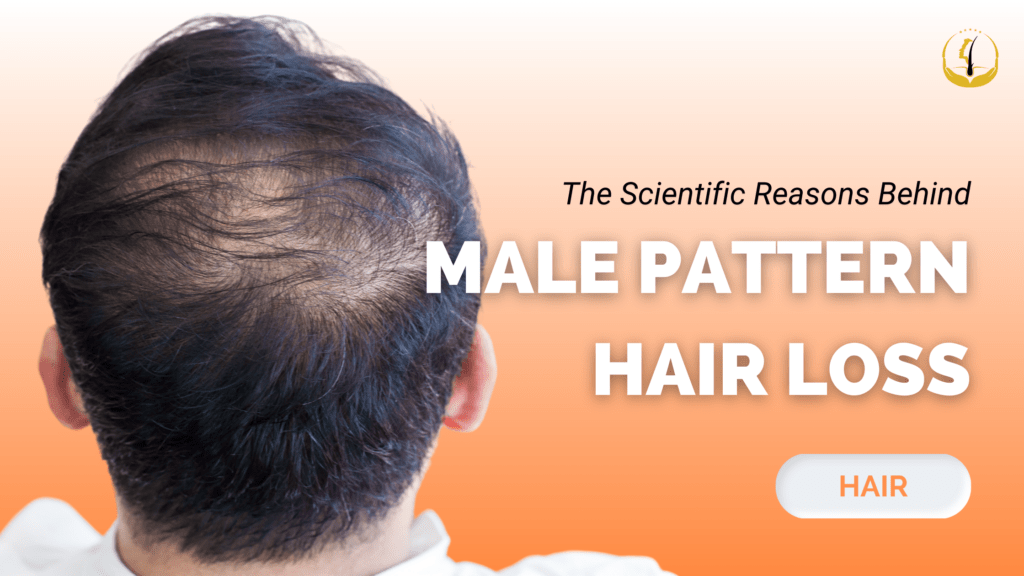
Male pattern hair loss, scientifically known as androgenetic alopecia, is a common condition affecting men worldwide. While often seen as a natural part of aging, it is primarily driven by genetic and hormonal factors. Understanding these causes is crucial for effective management. In Malaysia, many men experiencing thinning or receding hairlines turn to hair transplant Malaysia solutions, such as FUE or PRP therapy, to restore hair density and regain confidence. Genetic Predisposition Q: How influential are genetics in male pattern hair loss? A: Genetics play a substantial role, with a strong hereditary component. Specific genes linked to the androgen receptor and 5-alpha reductase enzymes contribute to hair follicles’ susceptibility to dihydrotestosterone (DHT), a key player in male pattern hair loss. Hormonal Factors Q: What role do hormones, particularly DHT, play in male pattern hair loss? A: Hormones, especially DHT derived from testosterone, play a pivotal role. DHT shrinks hair follicles over time through a process called miniaturization, resulting in thinner and shorter hair strands. Imbalances or genetic sensitivity to DHT can trigger hair loss. Hair Follicle Sensitivity Q: How do individual hair follicles contribute to male pattern hair loss? A: Hair follicles vary in their sensitivity to DHT. Those genetically predisposed to hair loss have follicles more receptive to DHT, leading to a gradual reduction in hair shaft diameter and a shorter growth cycle, ultimately resulting in the classic pattern of male hair loss. Inflammation and Microinflammation Q: What is the role of inflammation in male pattern hair loss? A: Recent research suggests that inflammation, both chronic and microinflammation, may contribute. Inflammation can disrupt the normal hair growth cycle and contribute to hair follicle miniaturization. Targeting inflammation could hold promise as a future treatment option. Age-Related Changes Q: How does aging contribute to male pattern hair loss? A: Aging leads to hormone level fluctuations, making the body less efficient at repairing and maintaining hair follicles. This natural process exacerbates hair loss, with follicles becoming more sensitive to DHT over time. Environmental Factors Q: Can environmental factors contribute to male pattern hair loss? A: While genetics and hormones are primary, environmental factors play a role. High stress levels, poor diet, smoking, and pollution exposure can accelerate hair loss. Adopting a healthy lifestyle and minimizing exposure to environmental toxins can mitigate these effects. Male pattern hair loss is a complex interplay of genetic predisposition, hormonal factors, and environmental influences. While prevention may not be entirely feasible, understanding the scientific nuances empowers individuals to take proactive measures. Researchers explore innovative treatments, like medications and hair restoration, to address this common concern. For personalized guidance on hair loss, consulting with GLOJAS experts is crucial to explore optimal solutions. Click the link to learn more about Hair Loss: “Understanding Male Pattern Hair Loss through the Norwood Scale’s Class 1–7”
Causes Of Scalp Fungus
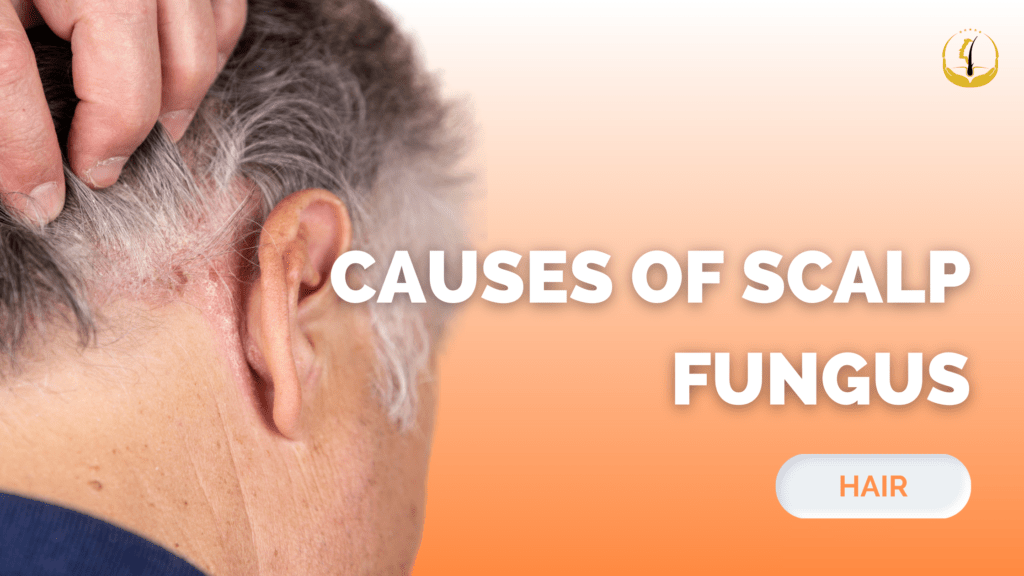
Scalp fungus, medically known as tinea capitis or ringworm of the scalp, is a prevalent fungal infection that impacts the scalp and hair follicles. Beyond its discomfort, this condition can lead to itching, redness, and even hair loss. Delving into the causes of scalp fungus becomes imperative for effective prevention and treatment. This article explores the primary causes, preventive measures, and available treatment options to help you combat this common scalp ailment. Fungal Infection Q: What is the most common cause of scalp fungus? A: The primary cause is a fungal infection. Dermatophytes, microscopic fungi, thrive in warm, moist conditions, making the scalp an ideal breeding ground. Transmission occurs through direct contact with infected persons, contaminated objects, or even pets. Poor Hygiene Q: How does poor hygiene contribute to scalp fungus? A: Poor hygiene elevates the risk by creating sweaty and dirty conditions that foster fungal growth. Neglecting regular hair washing and using contaminated hair tools or towels can introduce fungal spores. Maintaining good hygiene practices is crucial for prevention. Weakened Immune System Q: Can a weakened immune system increase the risk of scalp fungus? A: Yes, conditions like HIV/AIDS, diabetes, or autoimmune disorders compromise the body’s ability to fend off fungal infections. Medications that suppress the immune system, such as steroids or chemotherapy, can also heighten the risk. Close Contact with Infected Individuals Q: How does close contact with infected individuals contribute to scalp fungus? A: Close contact, especially among children, increases the risk due to their interactions in schools and daycare. Sharing personal items like hats or brushes facilitates infection spread. Teaching proper hygiene to children helps mitigate transmission risks. Warm and Humid Environments Q: Do environmental factors play a role in scalp fungus? A: Yes, warm and humid environments provide an ideal habitat for scalp fungus. High humidity, excessive sweating, and tight head coverings create conditions conducive to fungal growth. Keeping the scalp dry and avoiding tight headgear minimizes risks. Genetic Predisposition Q: Can genetics make one more susceptible to scalp fungus? A: Yes, genetic predisposition may increase susceptibility. While you can’t alter your genetic makeup, being aware of family history and taking preventive measures can reduce the risk. Prevention and Treatment Preventing scalp fungus involves maintaining good hygiene practices, avoiding close contact with infected individuals, and keeping your scalp clean and dry. If you suspect you have scalp fungus, consult a healthcare professional for a proper diagnosis and treatment plan. Treatment often involves antifungal medications, such as oral medications or topical creams, which your doctor can prescribe based on the severity of the infection. In conclusion, understanding the causes of scalp fungus is essential for prevention and treatment. Fungal infections, poor hygiene, a weakened immune system, close contact with infected individuals, warm and humid environments, and genetic predisposition are key contributors to this condition. By practicing good hygiene and taking precautionary measures, you can reduce your risk of developing scalp fungus and maintain a healthy scalp. If you suspect an infection, don’t hesitate to seek professional medical advice from GLOJAS hair experts for prompt treatment. Click the link to learn more about Scalp: “Treat Dry, Itchy Scalp with Jet Peel”
Beard Transplant AfterCare
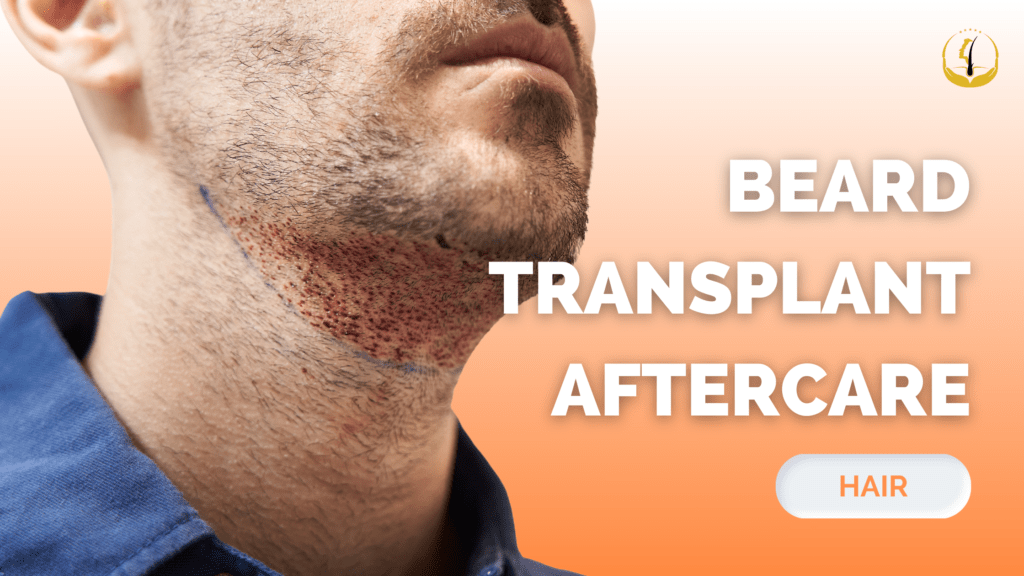
Beard transplants have emerged as a transformative solution for men seeking a more defined and fuller beard. While the surgical procedure lays the foundation for a new look, the journey continues with crucial aftercare. This article delves into the intricacies of beard transplant aftercare, offering insights on immediate post-transplant care and long-term strategies to nurture your newfound appearance. Immediate Post-Transplant Care Q: Why is it important to avoid touching the transplanted area immediately after the procedure? A: Touching or scratching the area can disrupt the healing process and potentially dislodge grafts, jeopardizing the success of the transplant. Q: What cleansing routine is recommended for the transplanted area? A: Gently clean the area using a mild, fragrance-free cleanser as per your surgeon’s instructions to prevent irritation and support healing. Q: Are there medications prescribed for immediate post-transplant care? A: Surgeons may prescribe antibiotics to prevent infections and anti-inflammatory drugs to minimize swelling during the initial healing phase. Q: Why is rest emphasized in the immediate post-transplant period? A: Rest is crucial for proper healing. Strenuous activities or exercises that increase blood flow to the transplant area should be avoided. Q: How can sunlight be harmful to the transplanted area, and what precautions are recommended? A: Direct sunlight can be harmful. Protect the area with a wide-brimmed hat or sunscreen with a high SPF when going outside. Long-Term Aftercare Q: Why do transplanted hairs initially fall out, and when can one expect new growth? A: Initial hair loss is normal. New growth will occur in the following months, emphasizing the importance of patience in the process. Q: How does a healthy lifestyle contribute to the long-term success of a beard transplant? A: A balanced diet rich in vitamins and minerals, especially Biotin, Vitamin E, and Vitamin D, promotes overall hair health. Q: What is the significance of a gentle beard care routine once new hair starts growing? A: A mild shampoo and conditioner maintain cleanliness and moisture. It’s essential to be gentle while shaving to prevent irritation. Q: Why are regular follow-up appointments with the surgeon crucial in long-term aftercare? A: Surgeons monitor progress and provide personalized guidance based on the individual’s healing process during follow-up appointments. Q: How do lifestyle factors like smoking and alcohol consumption impact beard transplant aftercare? A: Smoking impedes blood flow, hindering hair growth. Moderation in alcohol intake is advised to prevent dehydration and support hair health. In conclusion, beard transplant aftercare is a holistic process vital for a successful and enduring transformation. Following these guidelines, maintaining a healthy lifestyle, and prioritizing regular check-ins with your surgeon contribute to the longevity and overall success of your beard transplant. As you patiently nurture your new beard, you’re not just enhancing your physical appearance but also boosting your self-confidence and well-being. Click the link to learn more about Beard Transplants: “What to Expect During Beard Transplant Procedure?”
How To Get Good And Dense Hair?

Hair is not just a mere physical aspect; it embodies confidence and beauty for many. The quest for voluminous and dense hair is a common desire, yet factors such as genetics, age, and lifestyle can make it feel like an unattainable dream. Fear not, as there are concrete steps you can take to foster healthy hair growth and realize the lush locks you’ve always coveted. Nourish from Within Much like your body, your hair requires proper nutrition to flourish. A well-balanced diet, rich in vital vitamins and minerals, plays a pivotal role in maintaining optimal hair health. Integrate foods high in biotin, vitamin E, omega-3 fatty acids, and protein into your meals. Eggs, nuts, leafy greens, and fatty fish are excellent dietary choices. Additionally, staying adequately hydrated ensures that your hair follicles receive the moisture they need. Gentle Hair Care Routine Resist the temptation to vigorously scrub your scalp; a gentle approach is key. Utilize a mild shampoo and conditioner tailored to your hair type. Avoid excessive washing, as it can strip your scalp of natural oils, leading to dryness and brittleness. When drying your hair, pat it gently with a towel rather than rubbing, as wet hair is more prone to damage. Regular Scalp Massages Stimulating your scalp through massages can boost blood circulation to hair follicles, promoting hair growth. Employ your fingertips to gently massage your scalp in circular motions for a few minutes each day. Enhance the massage’s effectiveness by incorporating essential oils like lavender or rosemary. Choose the Right Hair Products Opt for sulfate-free hair products containing natural ingredients. Harsh chemicals can weaken the hair shaft and result in breakage. Seek products that offer moisture and protection without weighing down your hair. Avoid Excessive Heat Styling Frequent use of heat styling tools can damage your hair’s structure and lead to thinning. If necessary, use a heat protectant spray and the lowest heat setting possible. Embrace your hair’s natural texture whenever you can. Regular Trims Unlike to popular perception, frequent hair trimming encourages hair growth. Trimming prevents split ends from traveling up the shaft, preventing breakage and overall thinning. Aim for a trim every 6-8 weeks to maintain healthy-looking hair. Hair Supplements If your diet lacks essential nutrients, consult with a healthcare professional before considering hair supplements. These supplements often contain biotin, collagen, and vitamins B, C, and D, supporting hair growth and overall health. Alternatively, explore medical solutions offered by reputable providers like GLOJAS. Reduce Stress Chronic stress adversely affects hair health. Incorporate stress-reduction techniques like yoga, meditation, or regular exercise to maintain a healthy balance and prevent stress-induced hair thinning. Protect Your Hair Shield your hair from environmental stressors. When exposed to the sun, wear a cap or apply UV-protective hair products.. Safeguard your hair from chlorine and saltwater by rinsing thoroughly and applying a protective serum when swimming. Consult a Professional If you’re experiencing significant hair thinning or loss, consult GLOJAS hair experts. They can identify underlying causes and recommend appropriate treatments, including topical solutions, medications, or specialized therapies. In conclusion, achieving good and dense hair involves a holistic approach encompassing proper nutrition, a gentle hair care routine, and mindful lifestyle choices. By nourishing your hair from within, adopting a gentle care routine, and making informed choices about styling and protection, you can proactively work towards the luscious locks you’ve always desired. Click the link to learn more about Hair: “ Protecting Your Hair from Blow Dryers, Flat Irons, and Curling Irons”
How Do I Know My Hair Texture Type?

Your hair is a powerful aspect of your identity, reflecting your style, personality, and cultural background. Knowing your hair texture type is crucial for effective hair care and styling. With a variety of textures, from straight to coily, understanding your hair’s unique characteristics can initially seem confusing. Fear not, as we’re here to help you navigate the process of identifying your hair texture type and embracing it with pride. Observe Your Natural State The first step in discovering your hair texture is observing it in its natural state. After washing and conditioning your hair, let it air dry without any styling products. Pay attention to the overall shape and pattern of your strands. Understand the Main Categories: Type 1: Straight Hair– Lacks significant curl or wave, falls naturally, often shiny and sleek. Type 2: Wavy Hair– Forms loose ‘S’ shapes with subcategories 2A, 2B, and 2C, each having different wave patterns. Type 3: Curly Hair– Well-defined, springy curls with subcategories 3A, 3B, and 3C, varying in curl size. Type 4: Coily Hair– Tight coils or zig-zag patterns with subcategories 4A, 4B, and 4C, each having distinct coil characteristics. Check for Strand Thickness Consider the thickness of your individual strands, which can be fine, medium, or coarse. Fine strands are almost translucent, medium strands are of average thickness, and coarse strands are thicker and more robust. Assess Hair Porosity Hair porosity indicates your hair’s ability to absorb and retain moisture. To test porosity, place a strand of hair in a glass of water: if it floats, your hair has low porosity, and if it sinks quickly, it’s highly porous. Consider Density Evaluate hair density by running your fingers through your hair. High-density hair is thick and full, while low-density hair is more sparse. Seek Professional Guidance If uncertainty persists, consult a professional hairstylist for expert advice on hair care routines, products, and styles tailored to your unique texture. Embracing Your Hair Texture: Understanding your hair texture is more than a technical exercise—it’s about embracing your natural beauty and enhancing it. Tailored Hair Care Different textures have distinct needs. Fine hair may require lightweight products, while coarser hair benefits from richer, moisturizing products. Styling Confidence Knowing your texture type helps you choose styles that complement your hair’s natural tendencies. Embrace your waves, curls, or coils, and explore hairstyles that showcase your uniqueness. Healthy Practices Armed with knowledge, adopt healthier practices, such as avoiding excessive heat styling, using appropriate brushes or combs, and following gentle detangling methods. Product Selection Finding the right products becomes easier when you know your texture type. Look for products designed specifically for your hair’s needs, be it moisturizing creams for curls or volumizing sprays for straight hair. In conclusion, understanding your hair texture is a journey of self-discovery and self-care. By observing your hair’s natural state, considering factors like strand thickness and porosity, and seeking professional guidance, you can confidently determine your unique hair texture. Embrace your natural beauty and learn to care for and style your hair in ways that celebrate your individuality.
Is My Hair Thinning? When to See a Specialist?

Hair, a symbol of youth, beauty, and vitality, holds great significance in our lives. Any changes in our hair can spark concerns, especially when it comes to potential hair thinning. While hair thinning is a common issue affecting both men and women, distinguishing between normal shedding and significant hair loss is crucial. In this comprehensive guide, we will delve into the signs of hair thinning, its potential causes, and when it’s time to seek the advice of a specialist. Normal Hair Shedding vs. Hair Thinning First and foremost, it’s crucial to understand that shedding hair is a natural part of the hair growth cycle. On average, people shed between 50 to 100 hairs per day, which is entirely normal. However, when the rate of shedding surpasses the rate of regrowth or new hairs grow in thinner and more delicate, it could indicate hair thinning. Signs of Hair Thinning Increased Visibility of Scalp: If your scalp becomes more visible, especially when wet or pulled back, it could be a sign of hair thinning. Reduced Hair Volume: Noticeably thinner hair lacking its once-full volume is an indication of hair thinning. Excessive Hair Fall: While shedding is normal, an excess of hair in your shower drain, on your pillow, or in your hairbrush may indicate a potential problem. Thinning Hairline: Receding hairline or widening of the part is often one of the initial signs of hair thinning. Change in Hair Texture: A shift from thick and coarse to fine and soft hair warrants further investigation. Potential Causes of Hair Thinning Several factors can contribute to hair thinning: Genetics: Family history significantly influences susceptibility to hair thinning. Hormonal Changes: Pregnancy, childbirth, menopause, or certain medical conditions can cause hormonal fluctuations leading to hair thinning. Medical Conditions: Thyroid disorders, alopecia areata, and autoimmune diseases can contribute to hair thinning. Stress and Diet: Chronic stress and a poor diet lacking essential nutrients can impact hair health and contribute to thinning. Hairstyling Habits: Excessive use of heat styling tools, tight hairstyles, and harsh treatments can damage hair follicles. When to See a Specialist If you notice persistent signs of hair thinning beyond normal shedding, consulting a dermatologist or hair specialist is advisable: Sudden or Severe Hair Thinning: Rapid onset or substantial hair loss requires prompt professional attention. Visible Bald Patches: Bald patches may indicate an underlying issue requiring professional evaluation. Excessive Hair Fall: Consistent and excessive hair loss warrants consultation with a specialist. Emotional Distress: If hair thinning affects your self-esteem, seeking professional guidance is crucial. In conclusion, while shedding hair is part of the natural cycle, persistent and noticeable hair thinning may signal an underlying issue. Recognizing the signs and understanding potential causes empowers you to seek professional advice. A dermatologist or hair specialist can diagnose the cause and recommend suitable treatments to restore your hair’s health. Click the link to learn more about Hair Loss: “PRP: The All-Natural Solution to Hair Loss”
Understanding the Common Causes of Hair Loss in Women

Hair loss is a natural occurrence, but when it becomes excessive, it can raise concerns. Understanding the major reasons behind severe hair loss is crucial. Let’s delve into the top causes for significant hair loss in women. Thyroid Problems The thyroid gland, a significant endocrine organ, regulates hormones impacting our digestive system. Hair loss can be a sign of hormonal imbalance, either due to overproduction or underproduction by the thyroid gland. Poly-cystic Ovary Syndrome (PCOS) Poly-cystic Ovary Syndrome is usual in females and causes a few hormonal imbalances, which result in extreme hair thinning, in addition to other things. Alopecia Areata A condition causing extreme female pattern baldness and, in severe cases, complete baldness. Scalp Infections Common scalp infections like ringworm can lead to mass female pattern baldness in patches. Pregnancy Hormonal changes during pregnancy are a significant cause of female pattern baldness. Inadequate intake of essential vitamins and minerals during pregnancy can also contribute to hair fall. Birth Control Pills Birth control pills are a notable contributor to hair fall in women, especially if there’s a family history of female hair loss. Avoid taking such pills without consulting the doctor. Poor Eating Routine Or Diet Incorporating protein and Vitamin E-rich foods is essential to prevent hair fall. A deficiency in these nutrients can contribute to hair loss. Hair Styling Avoid excessive heat styling and straightening to prevent female pattern baldness. If styling is necessary, use high-quality hair products to support hair health. Chemotherapy Cancer treatments like chemotherapy often result in complete or partial baldness due to powerful medications. A vitamin and protein-rich diet is crucial for overall health during this period. High Stress Stress is a significant factor in hair loss among women. For those facing hair thinning or bald spots, hair transplant treatment is a reliable solution. In conclusion, identifying the causes of hair loss in women is the first step towards finding effective solutions. Whether it’s addressing hormonal imbalances, nutritional deficiencies, or avoiding harmful hair practices, understanding these factors empowers women to take charge of their hair health. For those seeking a reliable solution, hair transplant treatments offer a path to regaining confidence and a full head of hair.
PRP for Hair Thinning: Benefits, Procedure & Cost in Malaysia

Losing hair can be distressing and affect one’s self-confidence. Hair thinning or hair loss affects millions of men and women worldwide, but fortunately, advancements in medical technology have paved the way for innovative solutions. Platelet-Rich Plasma (PRP) therapy has emerged as a promising treatment for hair thinning, offering a natural and effective approach to hair restoration. Let’s explore why PRP hair thinning is gaining popularity and why it is being recommended as a viable option for those seeking to regain their luscious locks. PRP therapy is a cutting-edge treatment that utilizes the regenerative properties of platelets found in our blood. Platelets are rich in growth factors that promote tissue repair and regeneration. The procedure involves drawing a small amount of the patient’s blood, which is then processed in a centrifuge to extract concentrated platelet-rich plasma. This PRP solution is then injected directly into the scalp, targeting the areas affected by hair thinning or hair loss. One of the key reasons why PRP therapy is recommended for hair thinning is its ability to stimulate hair growth. The growth factors present in PRP activate dormant hair follicles, prompting them to enter the active growth phase. This process leads to increased hair thickness, density, and improved overall hair health. By rejuvenating existing follicles and encouraging the growth of new ones, PRP therapy provides a natural and lasting solution for hair thinning. Unlike traditional hair transplant procedures, PRP therapy is a non-surgical and minimally invasive treatment option. This means there is no need for incisions, stitches, or lengthy recovery periods. PRP therapy sessions are relatively quick, with most treatments taking around 30 minutes to an hour. Patients can resume their daily activities immediately following the procedure, making it a convenient choice for individuals with busy schedules. Another compelling reason why PRP therapy is recommended for hair thinning is its safety profile. Since PRP utilizes the patient’s blood, there is minimal risk of adverse reactions or complications. The procedure is well-tolerated, with most patients experiencing little to no discomfort. Furthermore, PRP therapy harnesses the body’s natural healing abilities, eliminating the need for synthetic substances or chemicals. It offers a holistic approach that is both safe and effective. PRP therapy for hair thinning is not a one-size-fits-all approach. Skilled practitioners tailor the treatment plans to each patient’s unique needs. The number of sessions required may vary depending on the severity of hair thinning and the desired results. A consultation with a qualified healthcare professional will determine the ideal treatment regimen for optimal outcomes. This personalized approach ensures that patients receive the best possible care and results. PRP therapy for hair thinning is known for its minimal side effects. Since the procedure uses the patient’s blood, the risk of allergic reactions or adverse effects is significantly reduced. Some individuals may experience mild swelling or redness at the injection sites, but these typically subside within a few hours or days. Compared to other hair restoration methods, PRP therapy offers a safe and well-tolerated option. PRP therapy is revolutionizing the field of hair restoration, providing hope for those struggling with hair thinning. With its ability to stimulate hair growth, non-surgical nature, safety profile, and tailored treatment plans, PRP therapy has become a highly recommended option for individuals seeking to regain their hair’s fullness and vitality. Whether you’re a man or a woman, PRP therapy offers a natural and effective solution that can boost your confidence and help you embrace your hair with pride. Consult with a qualified healthcare professional to discover if PRP therapy is the right choice for you and embark on a journey toward regaining your lush locks. At Glojas, we welcome clients to reach out to us directly to schedule a free initial consultation. We offer guidance and valuable insights on how best to address your specific challenges. Let us assist you in navigating your journey with confidence and clarity.